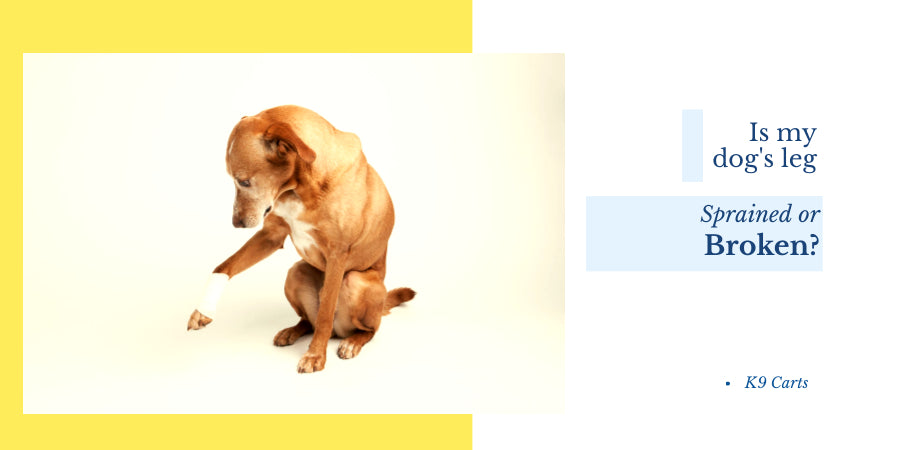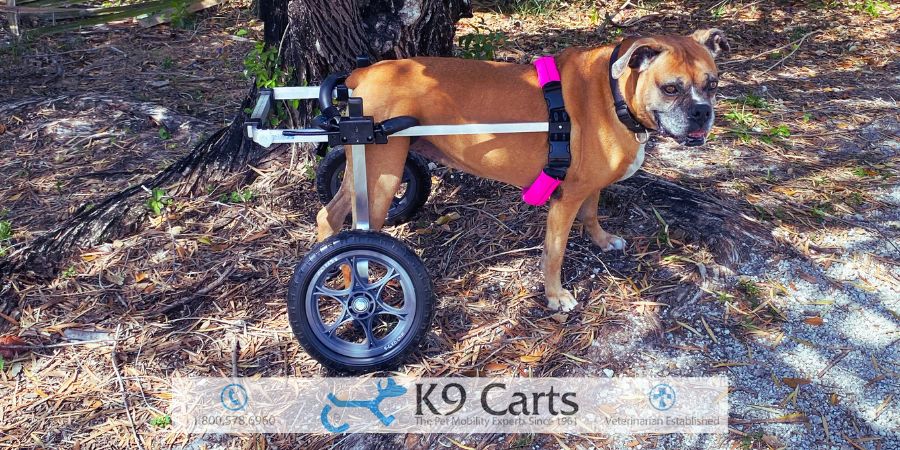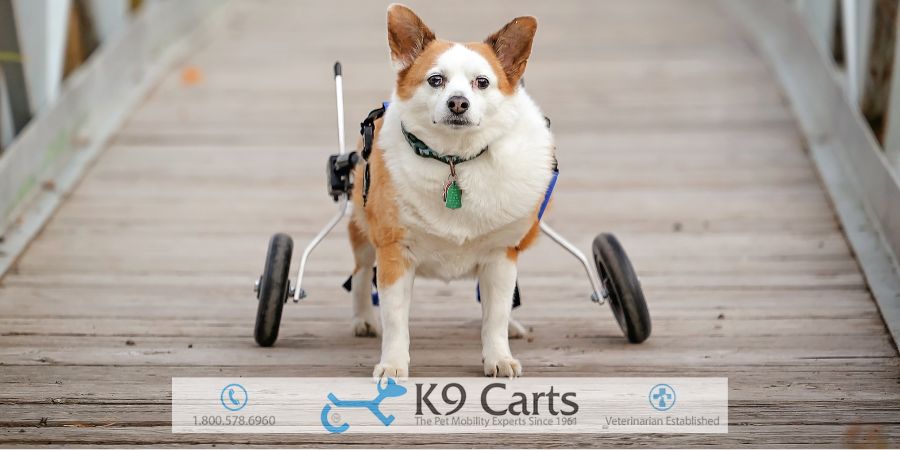How to Tell if Your Dog's Leg Is Broken or Sprained

No animal lover likes to see an animal experiencing pain and suffering, least of all that animal's owner. If your beloved dog can't get around well due to a significant leg injury, you need to know whether that injury constitutes a sprain or a fracture -- and how to react by pursuing the proper evaluation, treatment, and post-treatment care for each scenario.
However, you might not be able to tell one type of injury from the other at a glance. With that in mind, let's take a closer look at leg sprains and broken legs in dogs.
What Happens in a Dog Leg Sprain or Fracture?
Sprains and fractures may produce many of the same immediate symptoms and pose the same basic challenges to your dog's comfort and mobility. However, a fracture involves a crack, split, or break in a bone, while a sprain involves damage to ligaments, tough bands of tissue with limited flexibility that connect one bone to another bone.
For instance, the knee joint in a dog's leg contains cruciate ligaments that attach the tibia (lower leg bone) to the femur (upper leg bone). When these ligaments get severely overextended or suffer a direct injury, they can rupture or tear. This problem is called a sprain.
It's important to recognize the difference between a sprain and a strain. Strains involve torn or irritated soft tissues as well, but they occur in muscles and tendons, not ligaments. Since both injuries produce similar symptoms, you'll need to take your dog to the veterinarian to get an accurate diagnosis of one or the other.
A fracture can occur in any of the long bones of a dog's leg, varying in their forms and degrees of severity. The two main categories of fracture are incomplete and complete.
An incomplete fracture extends only partway through the bone; a complete fracture breaks the bone into two or more pieces. Complete fractures can also take a few different forms. An oblique fracture goes through the bone at a diagonal angle, while a transverse fracture goes straight through at a perpendicular angle. A comminuted fracture breaks the bone into more than two pieces.
Fractures can be closed or open. A closed fracture will occur completely beneath the skin; an open fracture will involve an open wound.
What Are the Symptoms of a Broken Leg in Dogs?
Different types of leg fractures in dogs may produce different symptoms, although all of them will likely cause discomfort and mobility problems. The following symptoms typically occur when a dog breaks a leg.1. Lameness
A dog with any kind of broken leg will almost certainly favor that leg to some degree. A minor fracture might hold a small amount of weight, but your dog will still limp or adopt an abnormal gait to compensate for the injury. A complete fracture cannot support any weight at all.2. Pain
A dog with a broken leg will hold its leg in midair, whine or cry, and resist your attempts to touch the damaged limb. The acute pain will not lessen until the fracture has been properly set by a veterinarian.3. Visible changes
A dog's broken leg may appear deformed or bent at an odd angle, especially if the pieces of a comminuted fracture have drifted out of their normal alignment. Swelling and bruising may be apparent. In an open fracture, you might even see the end of the bone poking out of the open wound in the skin.4. Shock symptoms
A severe fracture that causes internal bleeding can cause a dog to go into shock. Shock symptoms in dogs include pale gums, thirst, rapid breathing, nausea, vomiting, and weakness or faintness.What Are the Symptoms of a Sprained Leg in Dogs?
The symptoms of a sprained leg may not seem as dramatic as those of a broken leg, but they can still affect your dog in very noticeable ways. Watch for the following symptoms of a potential sprain:1. Lameness
A sprain will cause your dog to favor the injured leg, just as a fracture would. However, in many cases a less severe sprain may permit a certain amount of weight bearing. Your dog may barely touch the toes of the injured limb to the ground when standing or walking.2. Pain
A sprained leg can prove extremely painful, often causing a dog to whine when anything puts pressure on the ruptured ligament. You may see your dog licking obsessively at the site of the sprain in an effort to reduce the discomfort. The pain from a sprained leg may also cause your dog to lose interest in food.3. Swelling and Bruising
While you won't see anything as dramatic as an open wound with a bone sticking out of it, a sprained leg can experience bleeding beneath the skin. This typically leads to bruising and swelling in the knee, leg, and/or paw.How to Tell If My Dog has a Sprained or Broken Leg?
You can tell from your dog's limping and obvious pain that it's sustained some sort of injury -- but what? If you don't see an object embedded in its paw or or signs of paw damage, you may be looking at either a sprain or a broken leg. Here are some other factors you can use to understand your dog's leg injury better.1. Look at the leg
If you can't tell whether your dog has sprained its leg or fractured it, start by looking carefully at the leg itself. If you don't see external trauma, you can eliminate an open fracture as a possibility. If the leg hasn't assumed an odd angle, your dog has either suffered a clean break, a minor fracture such as a cracked bone, or no fracture at all. If the main visible changes involve swelling and discoloration, suspect a sprain.2. Give the injury (a little) time
If your dog isn't showing signs of shock or other emergency complications, wait a couple of days and evaluate the progress of the injury. Mild sprains, in which the ligaments are just slightly stretched, can show signs of improvement during this period. If your dog's lameness doesn't improve, schedule a veterinary evaluation for a possible fracture.3. Watch your dog walk
Does your dog keep its leg in the air, refusing to put even the slightest pressure on it, or does it simply walk gingerly? A fracture is more likely to make any weight bearing impossible. Keep in mind that only a veterinary exam can conclusively diagnose a sprain (or strain) as opposed to a fracture. If you have any doubts or concerns, always err on the side of caution by taking your dog to the vet.How to Manage Your Dog's Leg Injury
You can actively help your dog recover from its leg sprain or fracture once you know how to provide the right home care. Start by adopting these tips.1. Fracture Treatment and Recovery
Once your veterinarian sets the bone fragments back into their proper place, (if necessary), your dog will probably wear a splint or cats for several weeks to help the set bones knit properly, along with a neck collar to keep it from chewing or licking this device. A complex leg fracture may require surgical repair. Your veterinarian can reconnect bone fragments using pins, screws, and other metal hardware. A crushed leg may need to be amputated.2. Sprain Treatment and Recovery
If your dog has a sprained leg, your veterinarian may recommend a combination of rest and first aid measures. Start with ice packs to reduce the swelling and pain, and then switch to heat packs after the first day to keep the surrounding muscles relaxed. Medications can help reduce pain and swelling in a sprained leg.
A more serious sprain such as a ruptured cruciate ligament may require surgery, especially in larger dogs who must bear more weight on their legs. But whether your dog undergoes surgery or not, it may need to rest the injured leg for several weeks.
Helping Your Dog Cope With Leg Weakness After a Sprain or Fracture
A long period of immobility that weakens the leg muscles, arthritis in a damaged joint, or amputation can leave your pet struggling with mobility issues.
If your pet needs help with these post-treatment problems, give serious thought to ordering a dog wheelchair. These custom-fitted devices can support the front legs, rear legs, or both. Your dog will love being able to get around again thanks to this convenient, non-invasive solution. Meanwhile, that return to everyday mobility will help keep the rest of your dog's body toned and fit.
K9 Carts has the right dog wheelchair your injured canine may need. Browse our selection of products, select the particular type of support that will benefit your dog, consult our handy measurement guide for fitting instructions, and contact us with any questions you may have!






